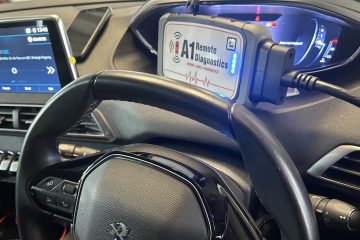Research by The Institute of the Motor Industry (IMI) has revealed significant gaps in EV qualified technicians across the UK.
The findings have been detailed in a new report: Electric Evolution: Examining the Triumphs, Trials and Roadblocks of the UK’s Electric Vehicle Aftermarket. They show that despite an increase in EV training in the last year, the availability of EV qualified technicians is still inconsistent around the country, presenting an underlying risk to the government’s decarbonisation plans.
The analysis looked at the proportion of EV qualified technicians compared to the total technician workforce in each UK local authority. Only seven local authorities across England, Wales, Scotland and Northern Ireland have 10% or more technicians qualified to work on electric vehicles. Worryingly more than 150 local authorities have less than 2% of technicians with the necessary qualifications to work safely on electric vehicles.
Top 20 Local Authorities with EV Technicians
| Croydon | 18.9% |
| Redditch | 14.4% |
| West Lancashire | 11.5% |
| Inverclyde | 11.2% |
| Winchester | 10.9% |
| Broadland | 10.7% |
| Cheltenham | 10% |
| North Hertfordshire | 9.8% |
| Rushmoor | 9.2% |
| Stevenage | 8.3% |
“Our data reveals the greatest proportion of EV qualified technicians in the automotive aftermarket workforce in some obvious locations such as London and the South East”, explained Emma Carrigy, Research Manager at the IMI. “However, it is a concern that there are also some big gaps in much of the central part of England as well as a number of London Boroughs.”
Bottom 20 Local Authorities with EV Technicians
| North East Derbyshire | 0.5% |
| Newry, Mourne and Down | 0.5% |
| Camden | 0.5% |
| Hackney | 0.5% |
| South Ribble | 0.5% |
| North Northamptonshire | 0.5% |
| Charnwood | 0.4% |
| Runnymede | 0.4% |
| Sunderland | 0.3% |
| Islington | 0.3% |
With electric vehicles predicted by Auto Trader to make up a quarter of the total UK car parc by 2030, the number of technicians qualified to work safely on the new drivetrain is set to fall short of what is required unless significant investment is made in training as a matter of urgency. The IMI is currently predicting that 77,000 IMI TechSafe qualified technicians will be required by 2030, increasing to 89,000 by 2032.
Gaps in popular areas for EV qualified technicians
The IMI also analysed the availability of EV qualified technicians in relation to where the greatest number of public charge points are located – a good indication of workforce matched to demand. Again, there are some serious gaps.
“While the top two local authorities for public charge points – Westminster and City of London – probably don’t have a huge demand for technicians, the fact that all other local authorities with the most public charge points have less than 2% of their automotive workforce qualified to work on electric vehicles could seriously damage public confidence and undermine the transition to zero”, added Carrigy.
“However, this issue can be addressed. There are more than 235 centres in the IMI network that can deliver EV qualifications, providing a significant opportunity to fill the skills gap and keep technicians safe.”

The Society of Motor Manufactuers and Traders (SMMT) recently highlighted that the number of battery-electric vehicles (BEVs) available from carmakers in the UK has quadrupled in the last five years, with 80 models available across all segments, up from 21 in 2018.
In addition, BEVs are now the second most popular fuel-type in the country, after petrol. In May alone, 24,513 fully-electric cars were registered, while plug-in vehicles, including pulg-in hybrids, registered 33,538 units. This group of cars made up 23.1% of registrations in May, showing an increasing number of buyers are turning to the technology, and will need EV qualified technicians to be able to service them when the time comes.




You must be logged in to post a comment.